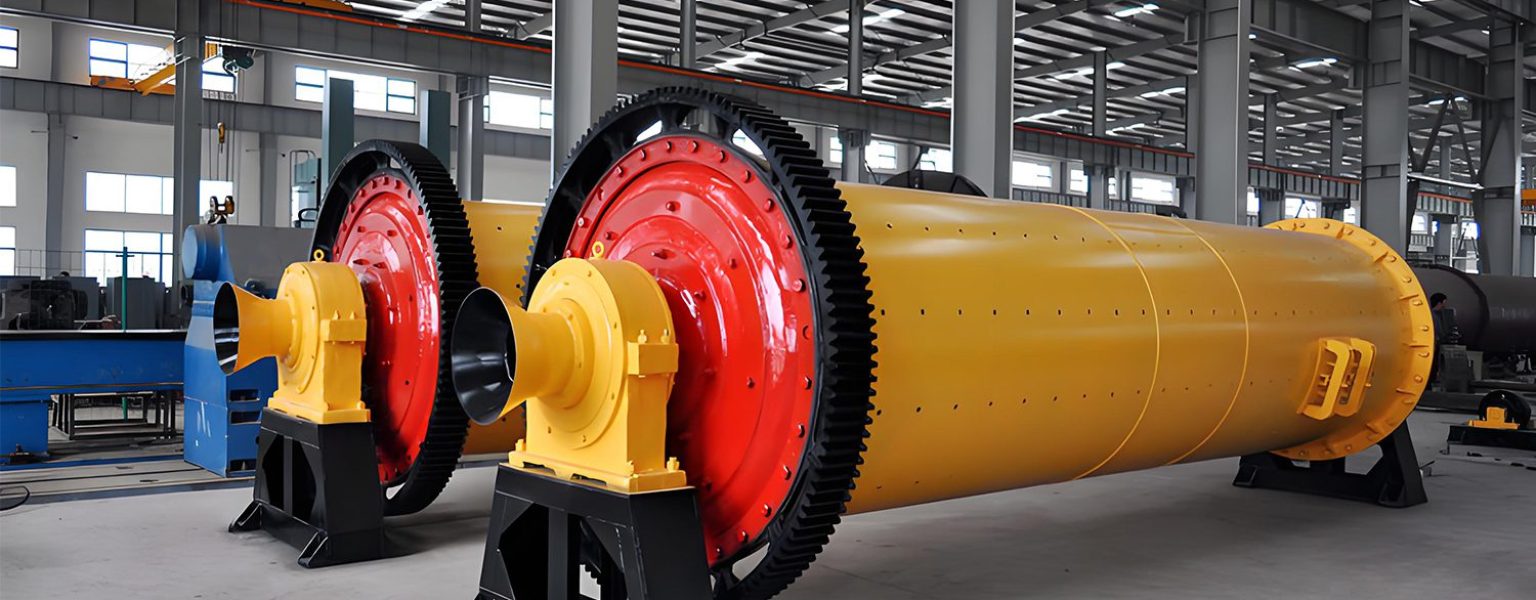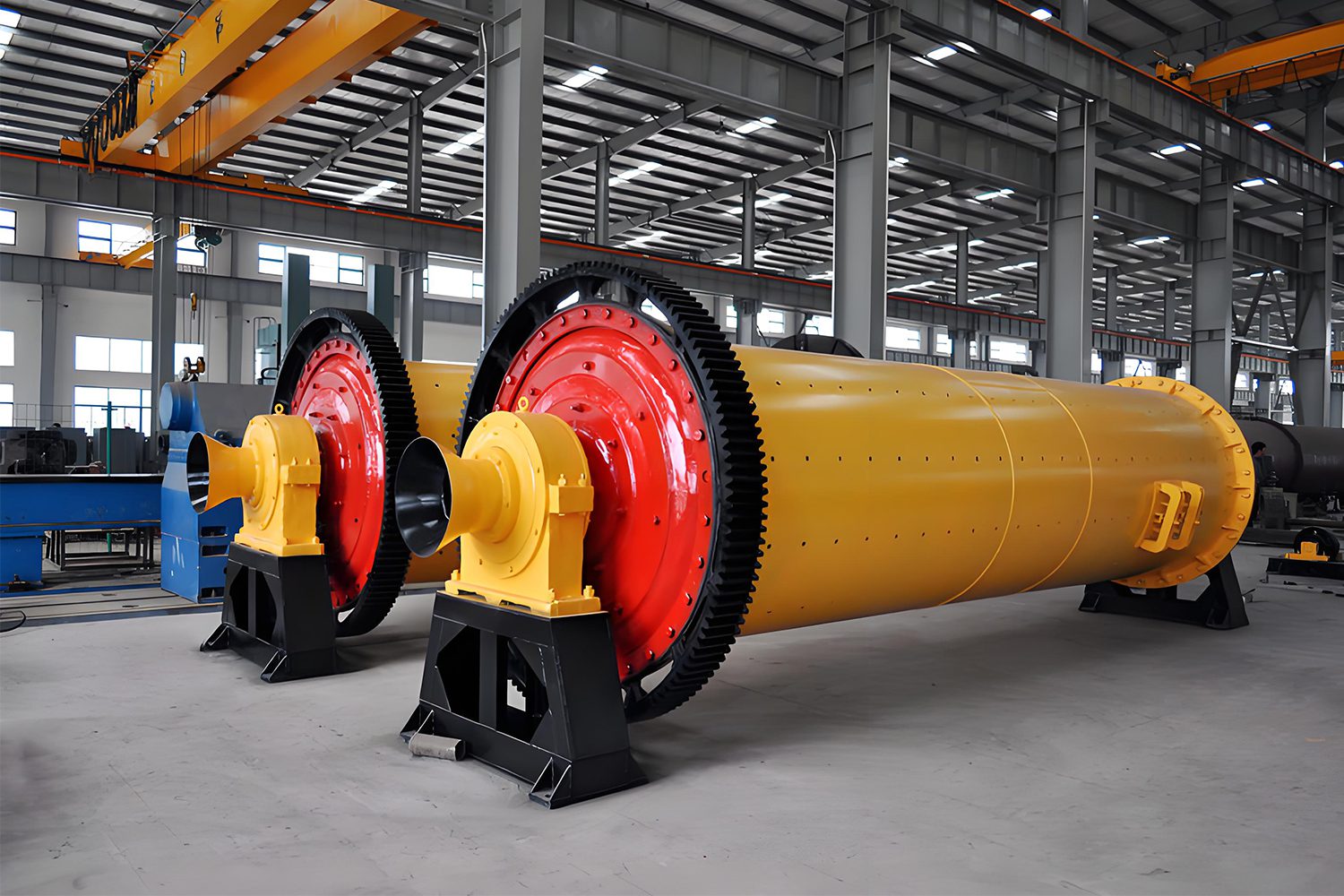Cement mills are key equipment in cement plants, primarily responsible for grinding cement raw materials. Steel balls inside the cement mill crush these raw materials to the required fineness. The efficiency, yield, and energy consumption of cement mills depend on the characteristics of the internal steel balls. Additionally, the operational status of the cement mill and the grinding efficiency directly affect the final quality of the cement.
In the cement production process, the wear of steel balls directly impacts the efficiency and quality of cement mills. Regularly replacing and supplementing these steel balls is crucial for maintaining efficient and stable operation in cement manufacturing.
Steel balls, also known as grinding media, are the primary raw material for achieving grinding in cement mills. The size, quantity, and proportion of steel balls during the initial loading are critically important. Any improper addition in these aspects can directly affect the grinding efficiency of the cement mill. During the grinding process, steel balls experience high-intensity wear, leading to issues such as breakage and loss of roundness, which can reduce grinding efficiency. Therefore, ensuring accurate initial ball loading is essential. It's also important to assess the wear of steel balls in the cement mill for timely supplementation, enhancing the production capacity of cement plants.

Steps for Replacing Steel Balls in Cement Mills
1. Preparation
Assess the Current Situation: Regularly check the internal steel balls of the cement mill. Record the degree of wear and the diameter.
Develop a Supplementation Plan: Create a detailed plan based on the wear situation and production needs. Include the supplementation cycle, required specifications, and quantities of steel balls.
Acquire Appropriate Steel Balls: Ensure the purchased steel balls meet quality standards. This will satisfy the production needs of different cement mills.
2. Arrange for Downtime
Notify Relevant Personnel: Inform operators and maintenance staff in advance. This ensures all relevant personnel are aware of the downtime arrangements.
Choose Downtime: Schedule the replacement during low production periods in the cement plant. This minimizes the impact on output.
3.Implementation of Replacement
Clean After Shutdown: After shutting down the cement mill, clean the interior. Use suction equipment to remove residual steel balls and dust.
Remove Old Steel Balls: Remove the old steel balls from the cement mill. You can do this manually or with mechanical equipment. Take care to avoid injury to personnel and damage to equipment.
Load New Steel Balls: Gradually load new steel balls into the cement mill based on the preliminary assessment results. Follow the predetermined proportions.
4. Operation and Inspection
Start the Mill: After loading the new steel balls, restart the cement mill. Monitor the sounds and vibrations to ensure normal operation.
- Record Performance Data: After a period of operation, record key parameters. This helps evaluate the performance of the new steel balls.
5. Evaluation and Optimization
Effectiveness Evaluation: Compare production data before and after the replacement. Analyze the impact on the efficiency, quality, and energy consumption of the cement mill.
Optimize Supplementation Plan: Adjust the supplementation cycle and specifications based on the evaluation results. This ensures the production efficiency of the cement plant.

Common Methods for Supplementing Steel Balls
1. Simple Supplementation Method
This method involves regularly supplementing steel balls in cement mills. Even if only one type of larger ball is added, the reasons for wear will cause the balls added later to form a natural size ratio sequentially.
Advantages: Simple and easy to implement, suitable for experienced operators.
Disadvantages: Lacks specificity, may not match the properties of the materials being milled, leading to lower grinding efficiency and higher steel consumption.
2. Reasonable Balancing Supplementation Method
This method is more targeted and includes the following steps:
Material Screening: Screen the new feed and return sand for the cement mill. Calculate the particle size composition of the material to be ground. Group the material by size to determine the required steel ball sizes.
Laboratory Testing: Conduct grinding tests with the material to be ground. This helps determine the appropriate ball size formula for the specific ore.
Optimize Ball Load: Use the particle size composition that yields good grinding results. Base the supplementation calculations on this composition to achieve the ideal ball load in the cement mill.
3. Precise Loading and Supplementation Method
This method is more detailed and includes the following steps:
Mechanical Research: Conduct research on the anti-crushing performance of the material to be ground in the cement mill and measure its uniaxial compressive strength.
Material Screening: Screen the material to determine its particle size composition. Group the material accordingly.
Calculate Ball Size: Use semi-theoretical formulas to calculate the required ball size accurately.
Statistical Mechanics Guidance: Use the relationship between crushing probability and steel ball yield to guide the ball matching process.
Initial Installation Verification: Validate the effectiveness of the initial installation plan through testing.
Supplementation Calculation: Determine the quantity of balls to be added. Use wear calculation methods or graphical methods for this purpose.
Safety Precautions
Wear Protective Gear: Ensure all personnel wear appropriate protective gear during replacement in the cement mill.
Site Management: Set up warning signs and restrict access to the work area for non-participating personnel.
By following these steps and methods to replace and supplement steel balls in cement mills, you can ensure optimal operation for the cement plant. Accurate calculations of the quantities and ratios of steel balls will help maintain the effective operation of the cement mill and improve production capacity.
If you are interested in cement mills or other related products, explore the solutions and services offered by Darko. For more information, please feel free to contact us.



